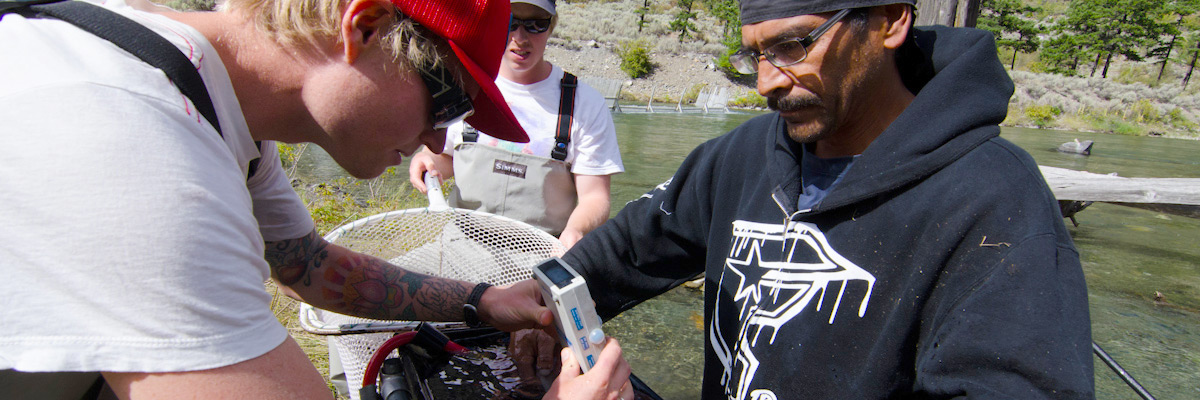
The University of British Columbia and St’át’imc First Nations partner to study salmon migration
For thousands of years, the St’át’imc First Nations around Lillooet, BC have benefitted from an abundant salmon resource on the Seton River. The Seton River watershed supports two populations of sockeye salmon as well as coho, Chinook, and pink salmon. However, hydroelectric development in the 1950’s saw the Seton Dam constructed on the Seton River. Although the dam has a fish ladder that allows fish to pass the dam so they can reach upstream spawning grounds, the impacts of the dam on salmon remains largely unknown.
To assess the impacts of the dam on salmon, the Pacific Salmon Ecology Laboratory in UBC’s Department of Forest and Conservation Sciences has partnered with St’át’imc Eco Resources (SER) to carry out a five year project to study salmon migration past Seton Dam. Led by professor Dr. Scott Hinch, the project involves two Master’s students (Collin Middleton, Vanessa Minke-Martin), a PhD student (Nolan Bett), and two research technicians (Nicholas Burnett, Matt Casselman) who work alongside local First nations to capture, tag, and monitor the migration of salmon as they swim up the Seton River and past Seton Dam to spawning grounds. Since the start of this program three years ago, six First Nations technicians have been trained in salmon tagging and sampling techniques with additional technicians to be trained in the future. This training has increased the capacity of the St’át’imc, so that they can run future monitoring programs, and also provide important local employment. In addition, the broader community has been engaged through presentations to the surrounding First Nations communities. Ultimately, this partnership will improve migration conditions for salmon and allow the St’át’imc First Nations to be stewards of their salmon resource.
For more information, contact Dr. Scott Hinch, Professor for the Department of Forest and Conservation Sciences.